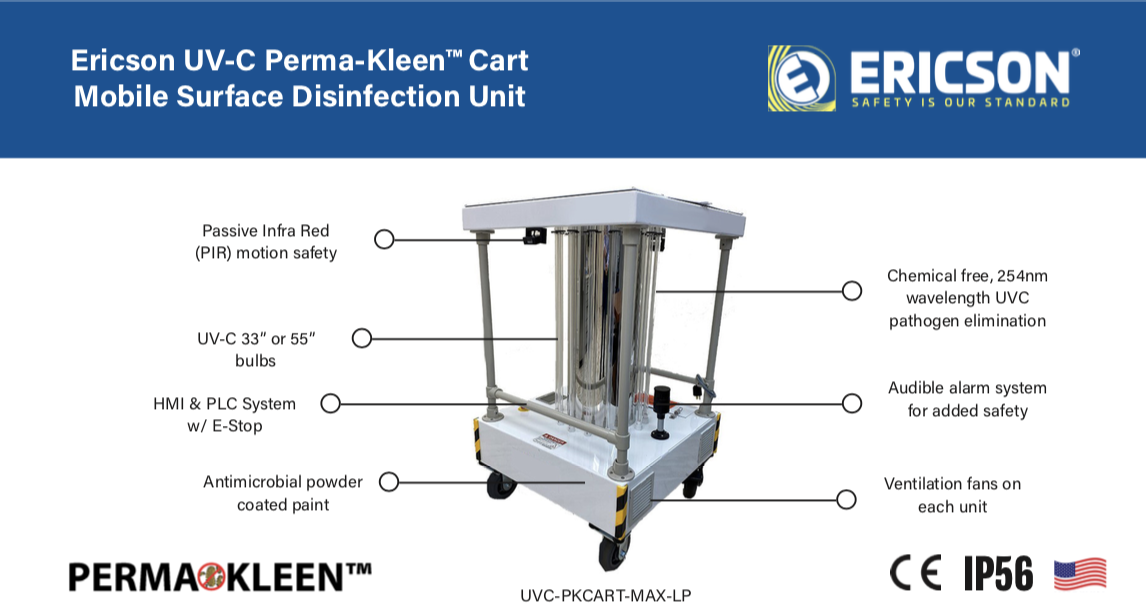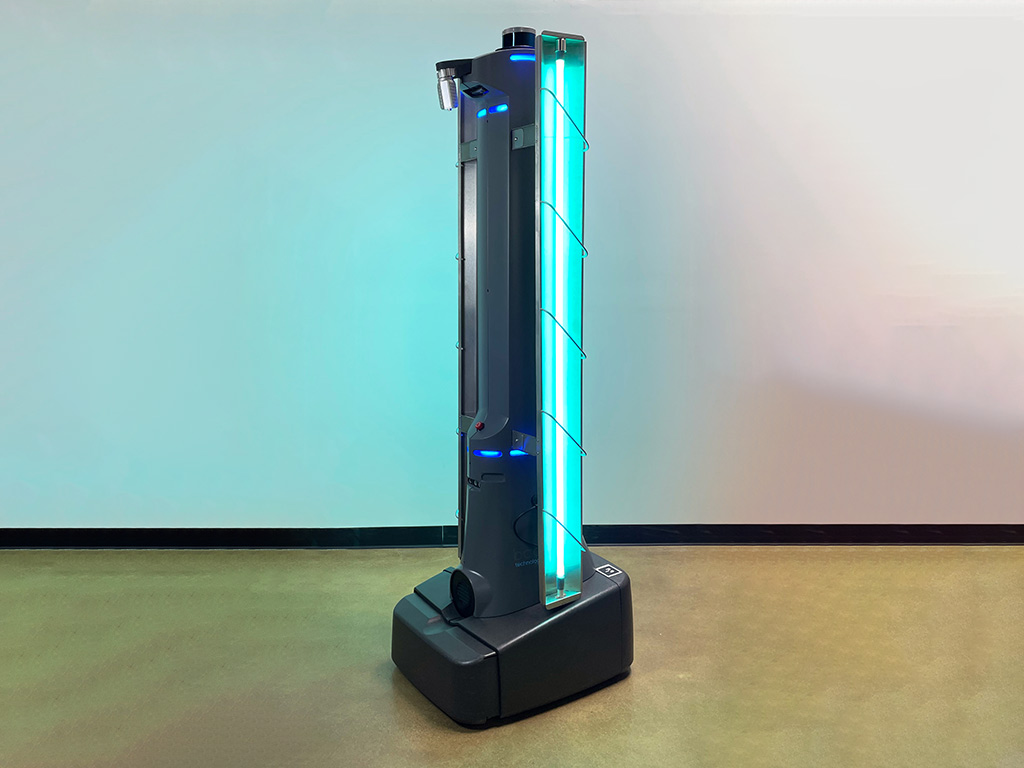UV Surface Disinfection Techniques: Optimizing Performance for Germ-Free Spaces
UV Surface Disinfection Techniques: Optimizing Performance for Germ-Free Spaces
Blog Article
UV Sanitation: The Cutting-Edge Technology Changing Hygiene Practices
In the world of hygiene methods, one modern technology has arised as a game-changer: UV sanitation. With its capability to eliminate damaging pathogens, this advanced innovation is transforming the way we approach cleanliness and health. How does UV sanitation work, and what are the advantages it uses? From medical care setups to food processing, UV sanitation is making its mark in numerous sectors. In this discussion, we will certainly check out the complexities of this transformative technology and look ahead to its appealing future.
Just How UV Disinfection Functions
UV disinfection functions by using ultraviolet light to damage or suspend microorganisms, offering a chemical-free and very effective technique of hygiene. This innovation harnesses the power of short-wavelength UV-C light, which can harming the DNA and RNA of microorganisms, therefore providing them unable to create and reproduce damage.
The procedure begins with the installment of UV sanitation systems, which contain UV lights that give off UV-C light. These lights are strategically placed in areas where microbial contamination is a worry, such as water treatment plants, health centers, laboratories, and food processing centers.
When microorganisms are exposed to UV-C light, the photons penetrate their cell wall surfaces and reach the DNA and RNA within. The high-energy UV-C photons interfere with the genetic product by producing bonds in between adjacent nucleotides, resulting in the formation of thymine dimers. These dimers stop the microbes from reproducing, rendering them harmless.
UV sanitation is highly effective against a large range of bacteria, consisting of microorganisms, viruses, and bloodsuckers. It is especially efficient versus waterborne microorganisms like E. coli, Giardia, and Cryptosporidium. UV sanitation is a chemical-free technique, getting rid of the requirement for potentially harmful anti-bacterials and lowering the threat of dangerous disinfection by-products.
Advantages of UV Sanitation
UV sanitation provides countless advantages in the field of hygiene, making it an extremely chosen method for effectively removing unsafe microbes. One of the essential advantages of UV sanitation is its capability to offer a chemical-free remedy. Unlike traditional sanitation techniques that depend on chemicals, UV disinfection makes use of ultraviolet light to ruin the DNA of microorganisms, providing them not able to reproduce and trigger infections. This not only removes the requirement for potentially dangerous chemicals however also minimizes the risk of chemical deposit on surfaces.

UV sanitation is also highly versatile in its applications. It can be utilized in different settings, including healthcare facilities, institutions, food handling facilities, and water treatment plants. UV disinfection systems can be easily integrated right into existing hygiene techniques, giving an added layer of defense versus contagious illness.
Along with its effectiveness and flexibility, UV disinfection is also eco-friendly. It does not generate any type of unsafe byproducts or residues, making it a sustainable and safe technique for sanitation - uv surface disinfection. Furthermore, UV sanitation calls for very little upkeep and has a lengthy life expectancy, resulting in cost financial savings in the future.
UV Disinfection in Healthcare Setups
In health care settings, UV sanitation has become a cutting-edge technique for successfully eliminating harmful microbes. Using UV light to decontaminate surface areas and equipment has actually acquired appeal due to its capacity to offer an added layer of security against virus. UV disinfection works by producing ultraviolet light at a details wavelength that is deadly to bacteria, viruses, and various other microorganisms. This modern technology provides numerous advantages in health care setups.
Firstly, UV disinfection is a non-chemical method, making it an eco pleasant option compared to standard sanitation methods that typically include making use of harsh chemicals. Using UV light gets rid of the requirement for chemical anti-bacterials, lowering the risk of damaging deposit or chemical direct exposure to both people and healthcare workers.
Additionally, UV disinfection is extremely efficient in eliminating a large range of microbes, consisting of drug-resistant microorganisms such as MRSA and C. difficile. It gives a regular and dependable disinfection process, guaranteeing that all surfaces and equipment are thoroughly disinfected, also in hard-to-reach locations.

UV Disinfection in Food Handling
The application of UV disinfection expands past health care settings and finds significant worth in the realm of food handling. uv surface disinfection. UV disinfection technology is coming to be progressively popular in the food sector because of its ability to properly get rid of hazardous virus and improve food safety and security
One of the primary advantages of UV sanitation in food handling is its capability to target a large range of microbes, including mold and mildews, infections, and germs. By utilizing UV light at certain wavelengths, it is feasible to interrupt the DNA and RNA of these microorganisms, rendering them unable to cause or reproduce injury. This innovation can be applied to various phases of the food handling chain, including surface sanitation, tools sanitation, and water treatment.
UV disinfection provides a non-thermal and chemical-free approach of sterilizing food. Unlike typical sanitation techniques that depend on chemicals or warm, UV technology does not leave any kind of deposit or alter the preference, appearance, or dietary value of the food. This makes it an optimal service for sectors that call for strict adherence to top quality requirements.
Additionally, UV disinfection systems are very easy to mount and operate, calling for very little maintenance. They can be incorporated into existing handling lines without causing substantial interruptions to the production procedure. Additionally, UV systems have a fast treatment time, permitting continuous processing and reducing downtime.
The Future of UV Sanitation

One location where UV sanitation is expected to make substantial innovations remains in the area site link of healthcare. With the rise of antibiotic-resistant bacteria and the requirement for a lot more reliable sanitation approaches, UV light has the go to my site possible to play a crucial role in minimizing healthcare-associated infections. UV sanitation systems can be made use of to sanitize surface areas, tools, and also the air in medical care centers, assisting to stop the spread of unsafe virus and boost person safety and security.
An additional market that might benefit from developments in UV disinfection technology is the food sector. UV light has actually currently shown to be an effective method for sanitizing food and minimizing the danger of foodborne diseases. As technology boosts, we can anticipate to see much more cost-effective and reliable UV disinfection systems being carried out in food processing plants, guaranteeing that the food we eat is secure and without hazardous bacteria.
Verdict
Finally, UV disinfection is a sophisticated innovation that is transforming hygiene methods in healthcare setups and food processing. By making use of UV light to eliminate or shut off microbes, it uses various advantages such as performance, security, and performance. With recurring developments in this area, UV disinfection holds wonderful prospective for the future of hygiene, providing a trustworthy and sustainable service for keeping clean and hygienic atmospheres.
UV sanitation is a chemical-free method, getting rid of the requirement for possibly hazardous disinfectants and minimizing the threat of hazardous sanitation byproducts.
Unlike traditional disinfection techniques this page that count on chemicals, UV sanitation makes use of ultraviolet light to destroy the DNA of bacteria, making them not able to duplicate and create infections. Unlike traditional sanitation methods that rely on chemicals or heat, UV innovation does not leave any type of deposit or change the preference, appearance, or dietary value of the food. As innovation enhances, we can expect to see a lot more cost-effective and efficient UV sanitation systems being implemented in food handling plants, making certain that the food we eat is safe and cost-free from harmful bacteria.
In verdict, UV sanitation is a sophisticated modern technology that is transforming cleanliness practices in healthcare setups and food processing.
Report this page